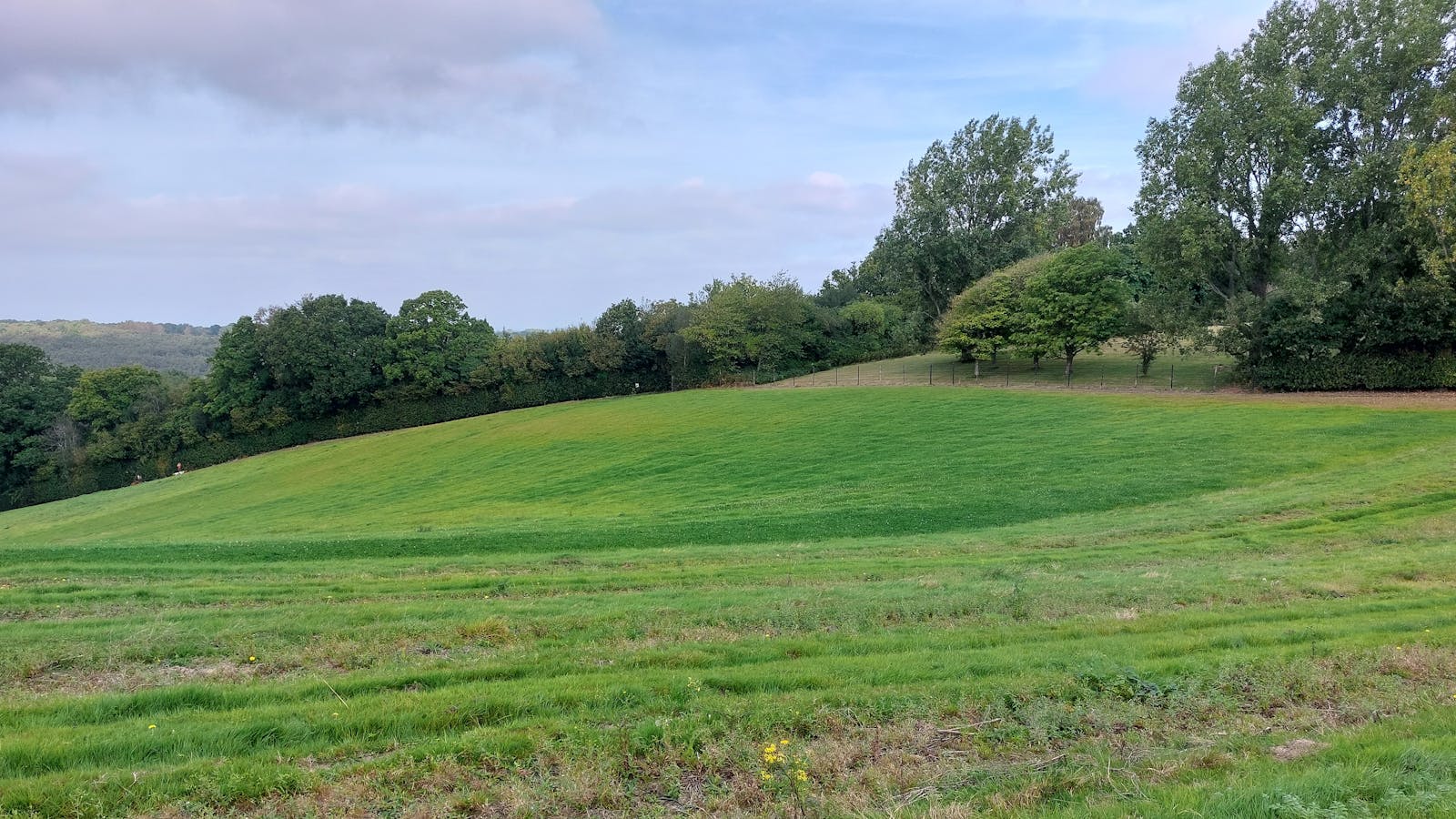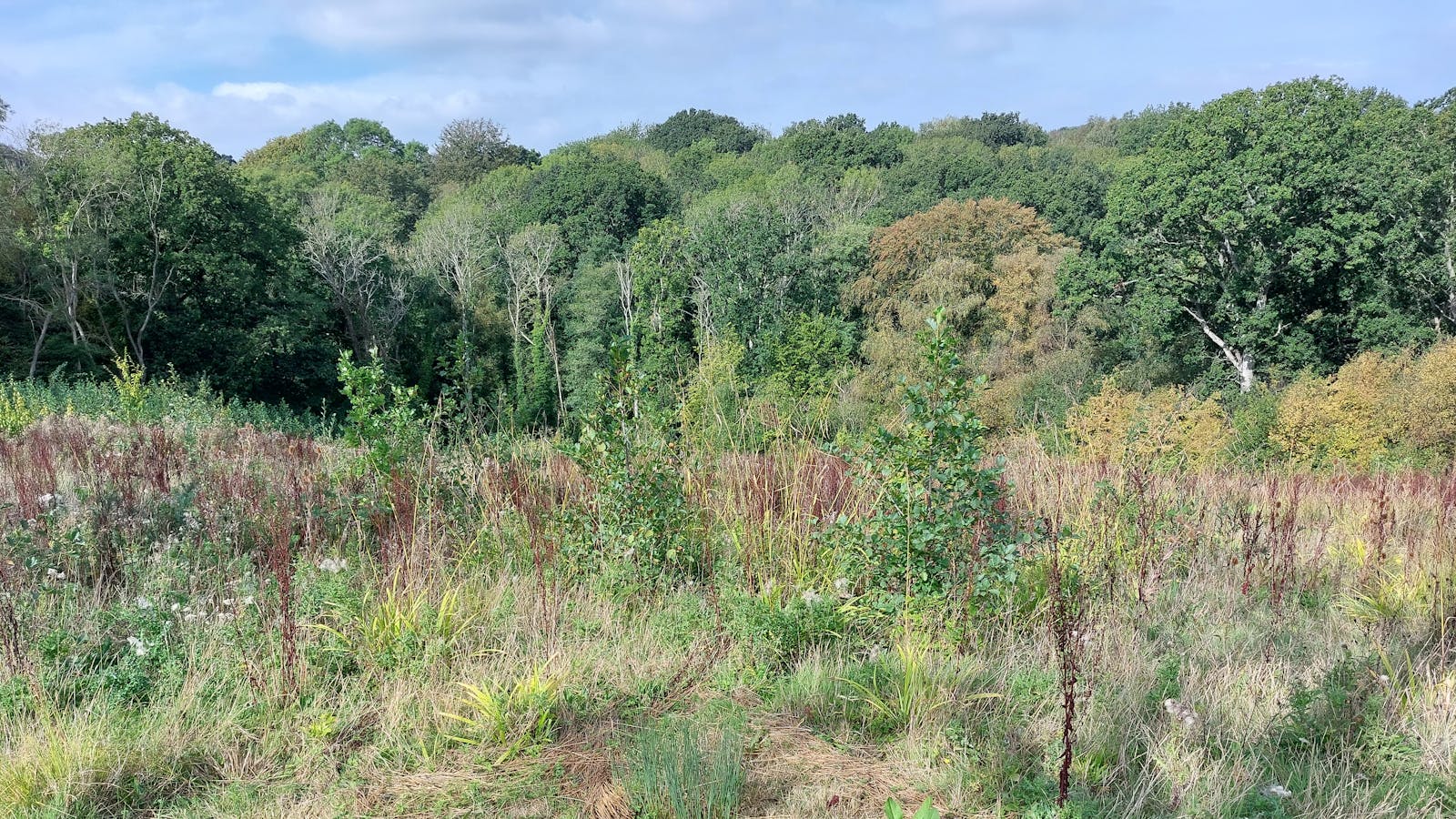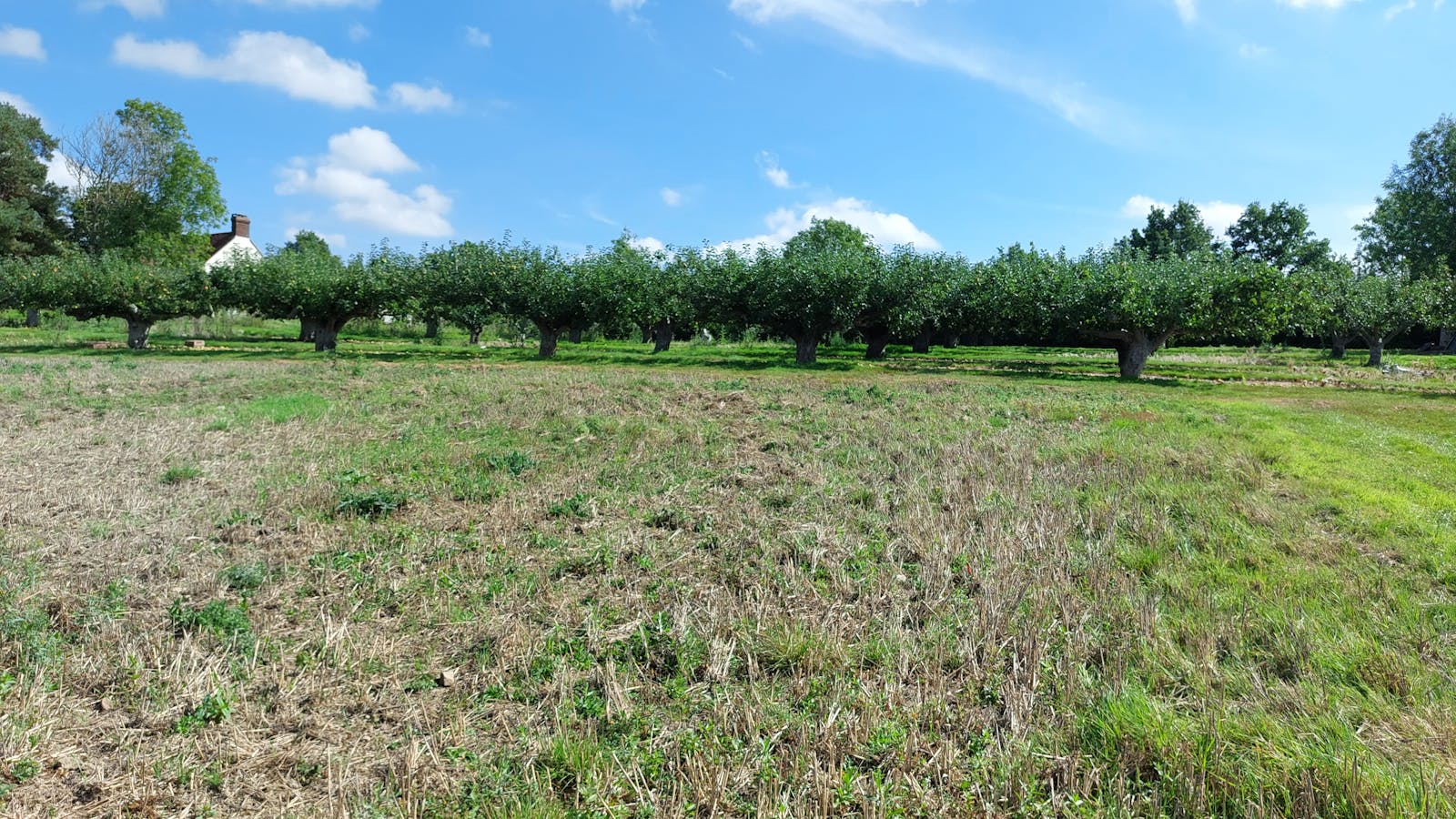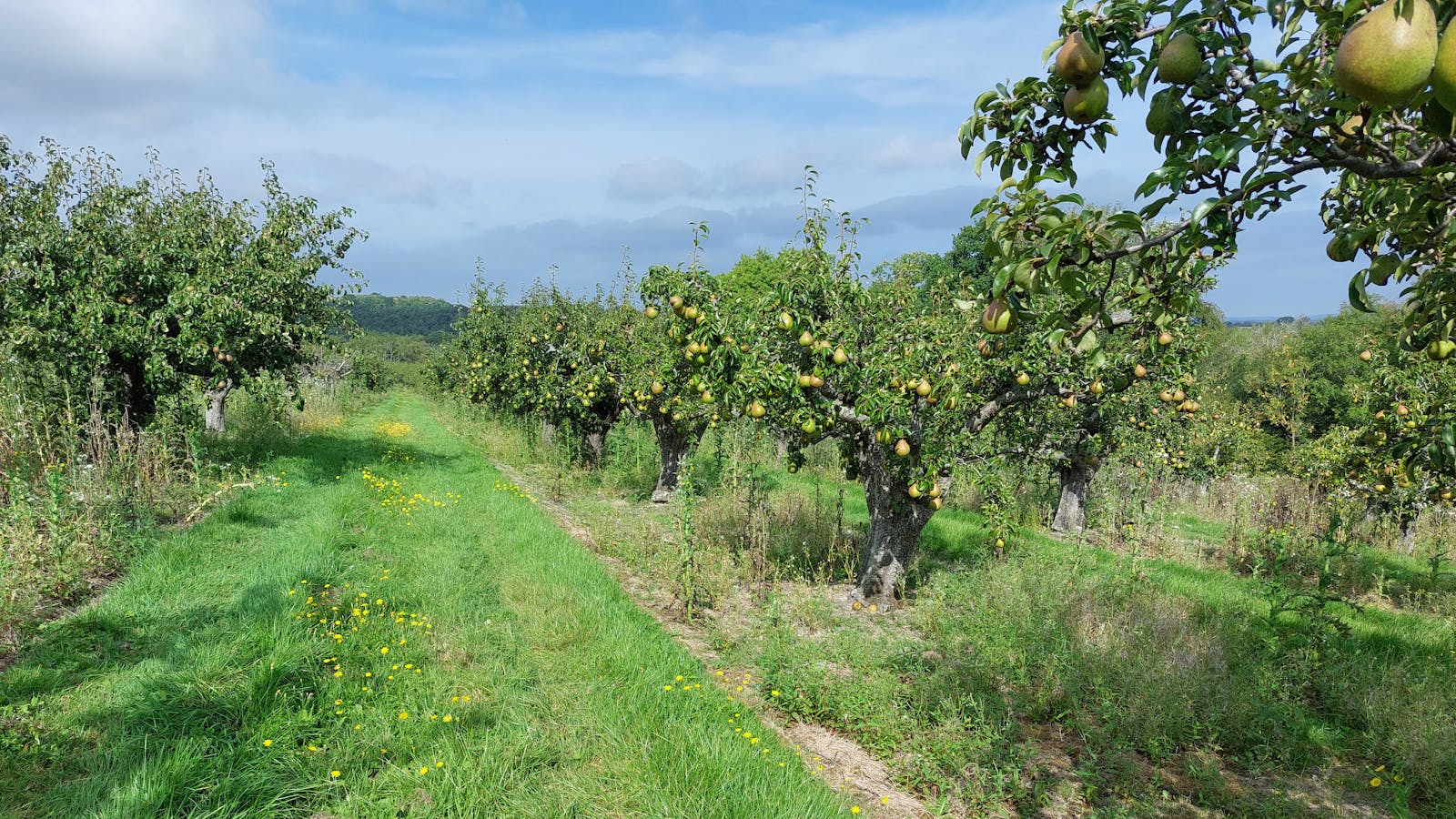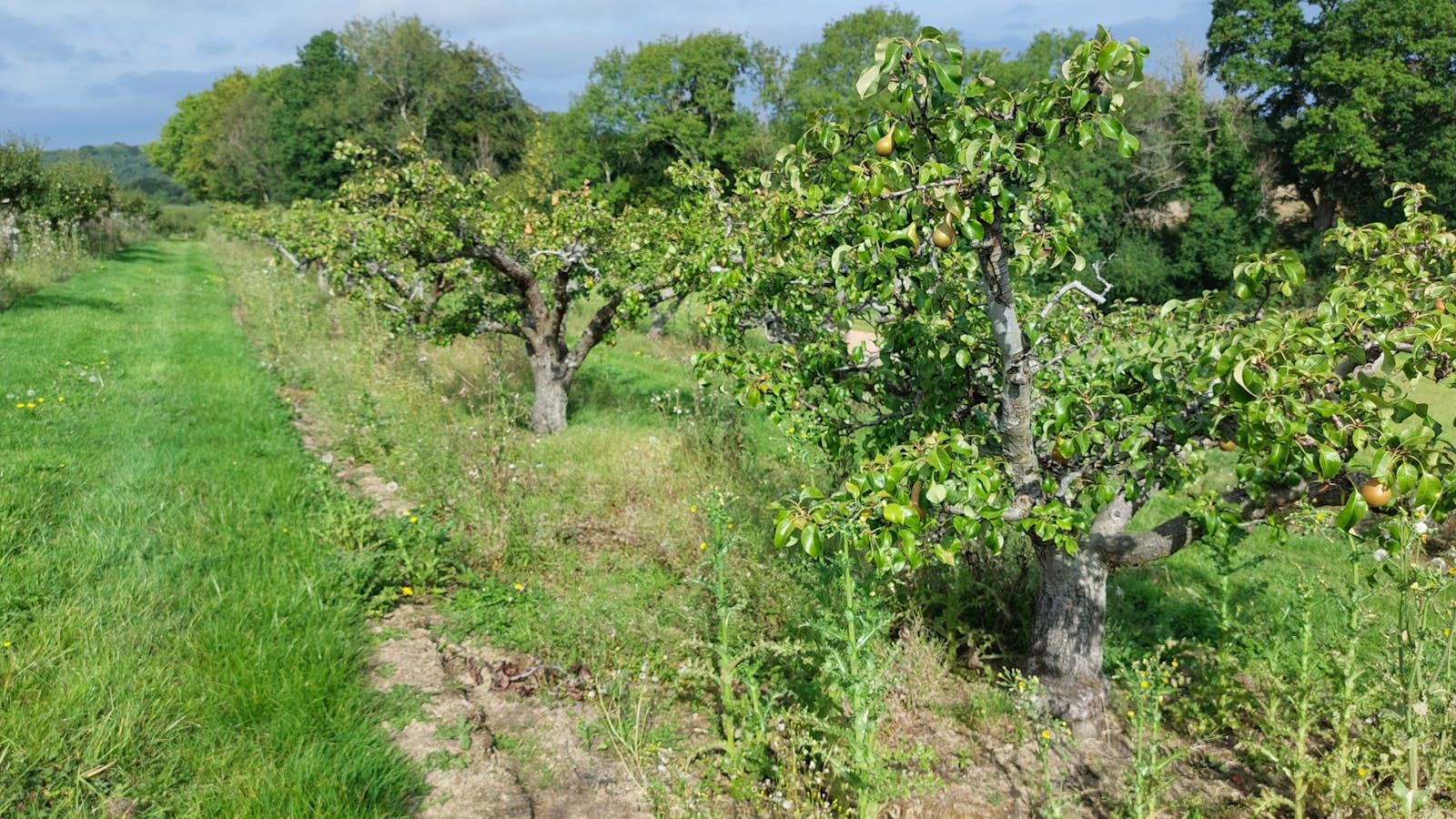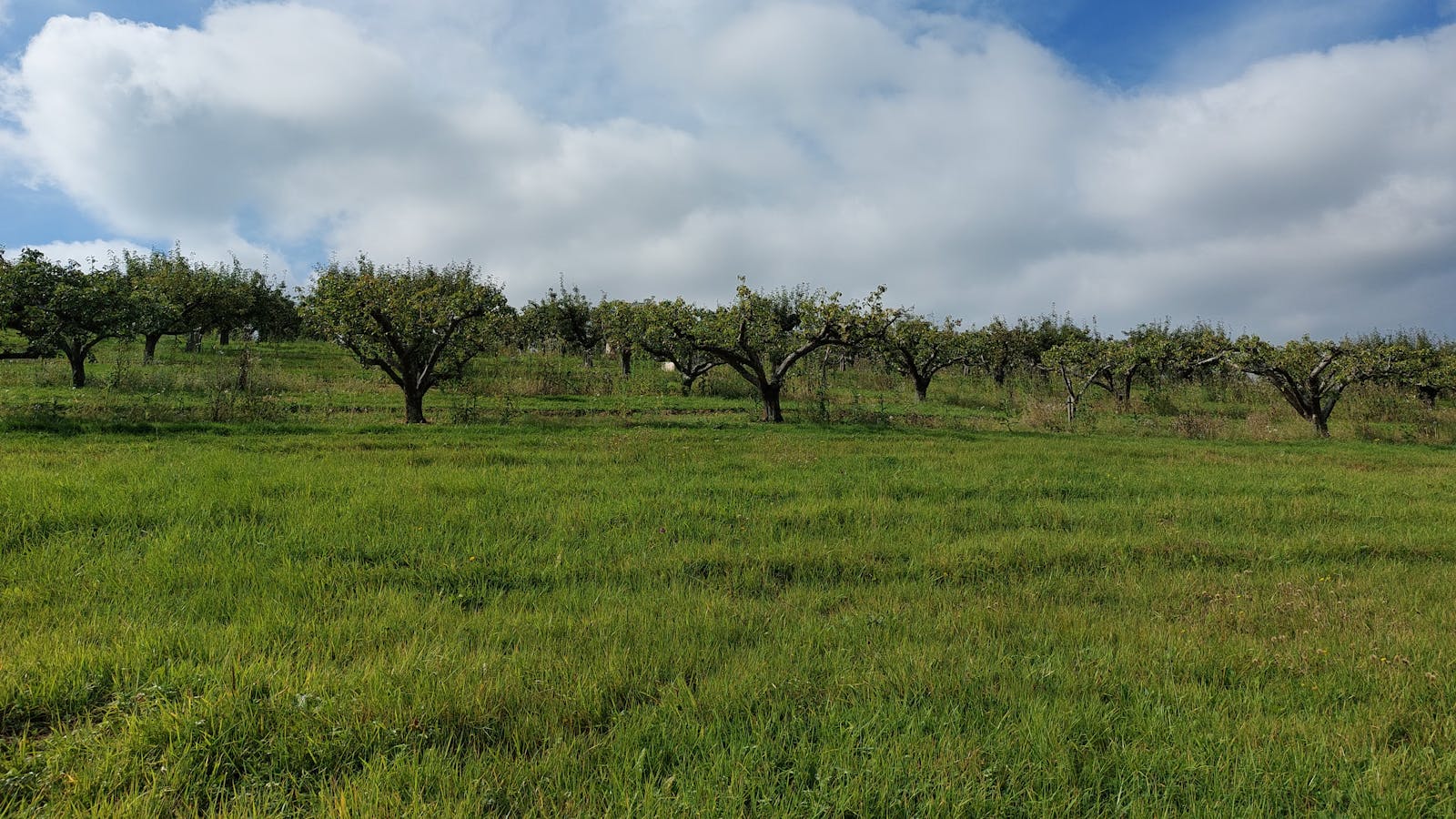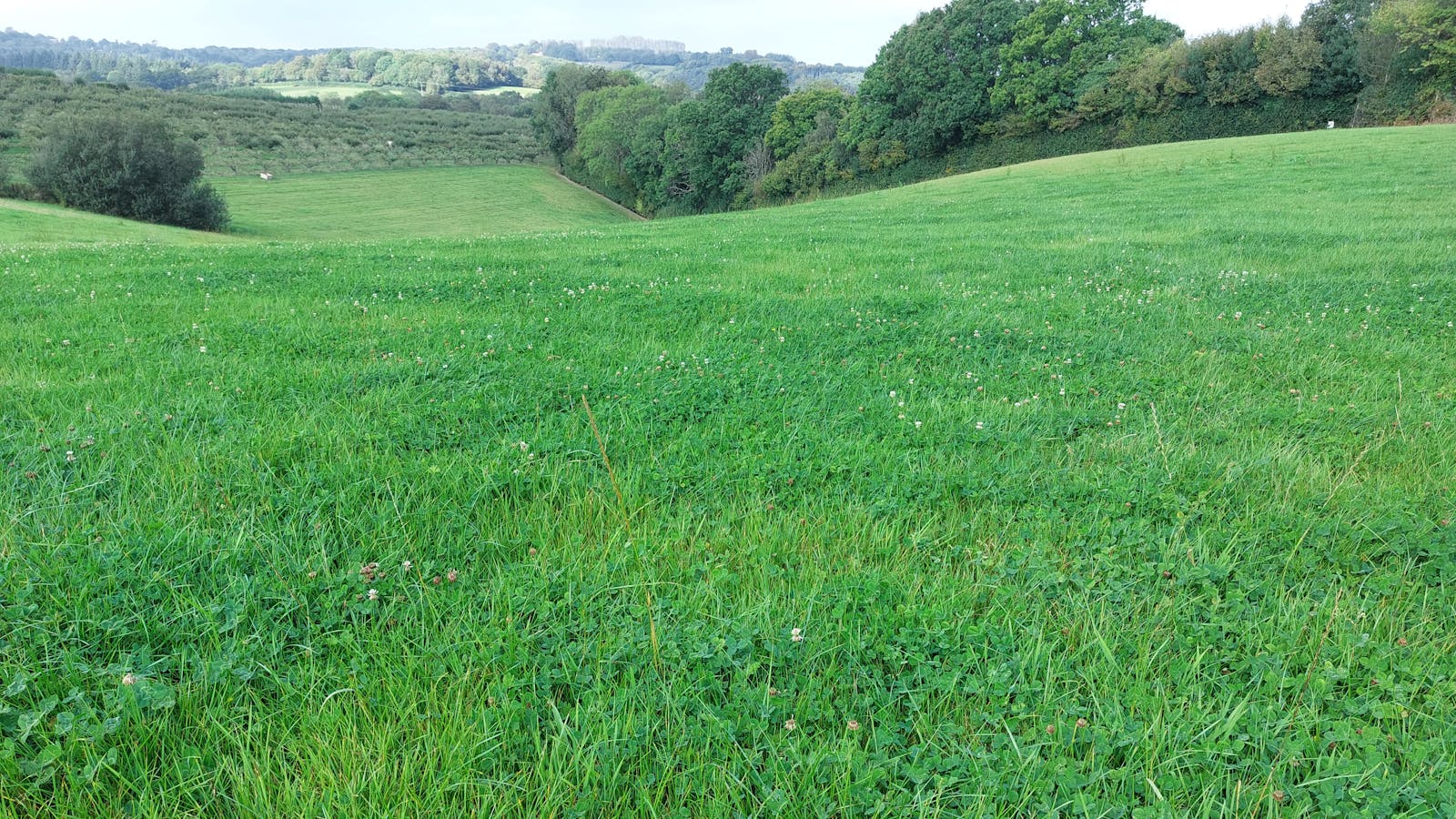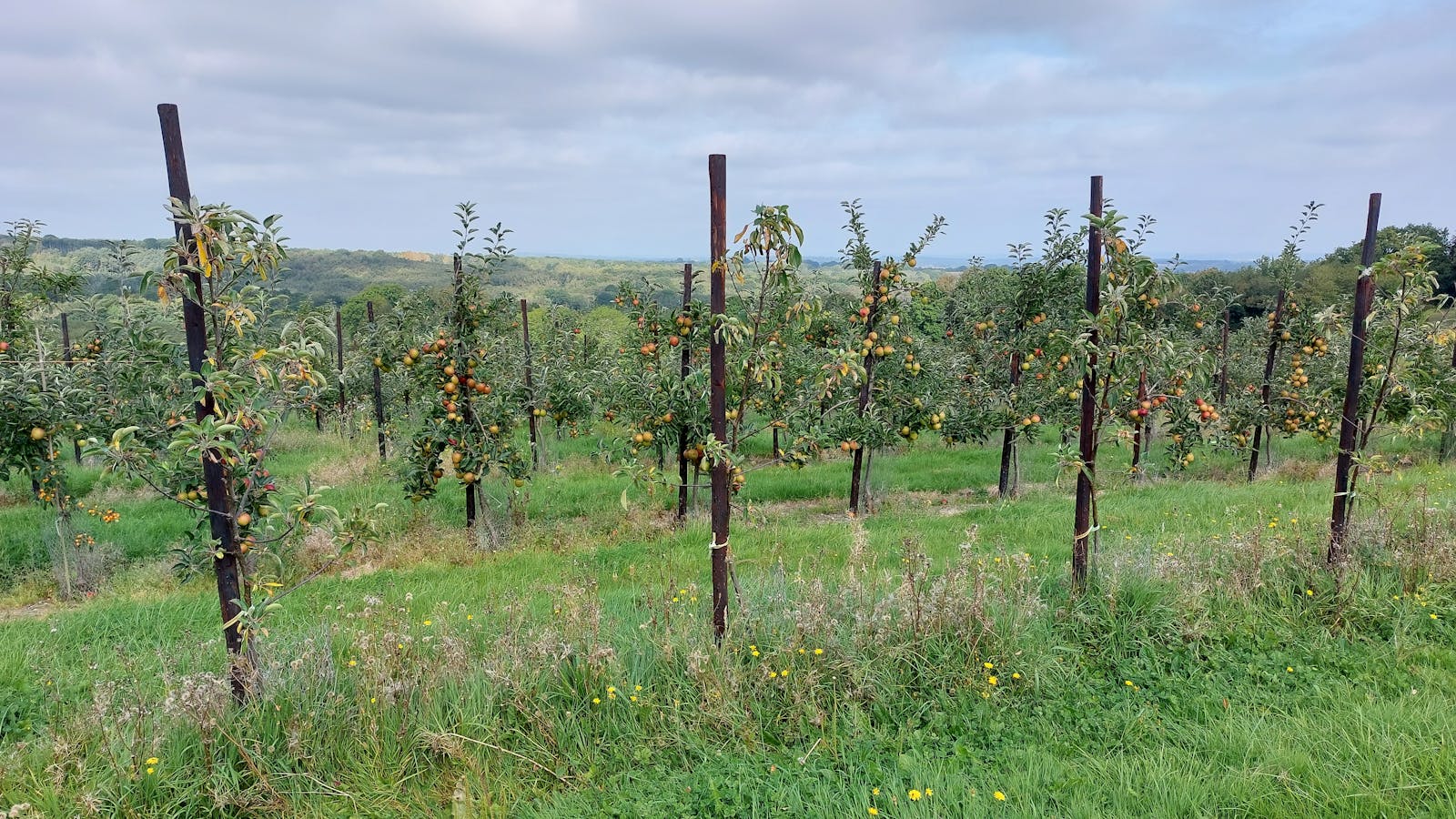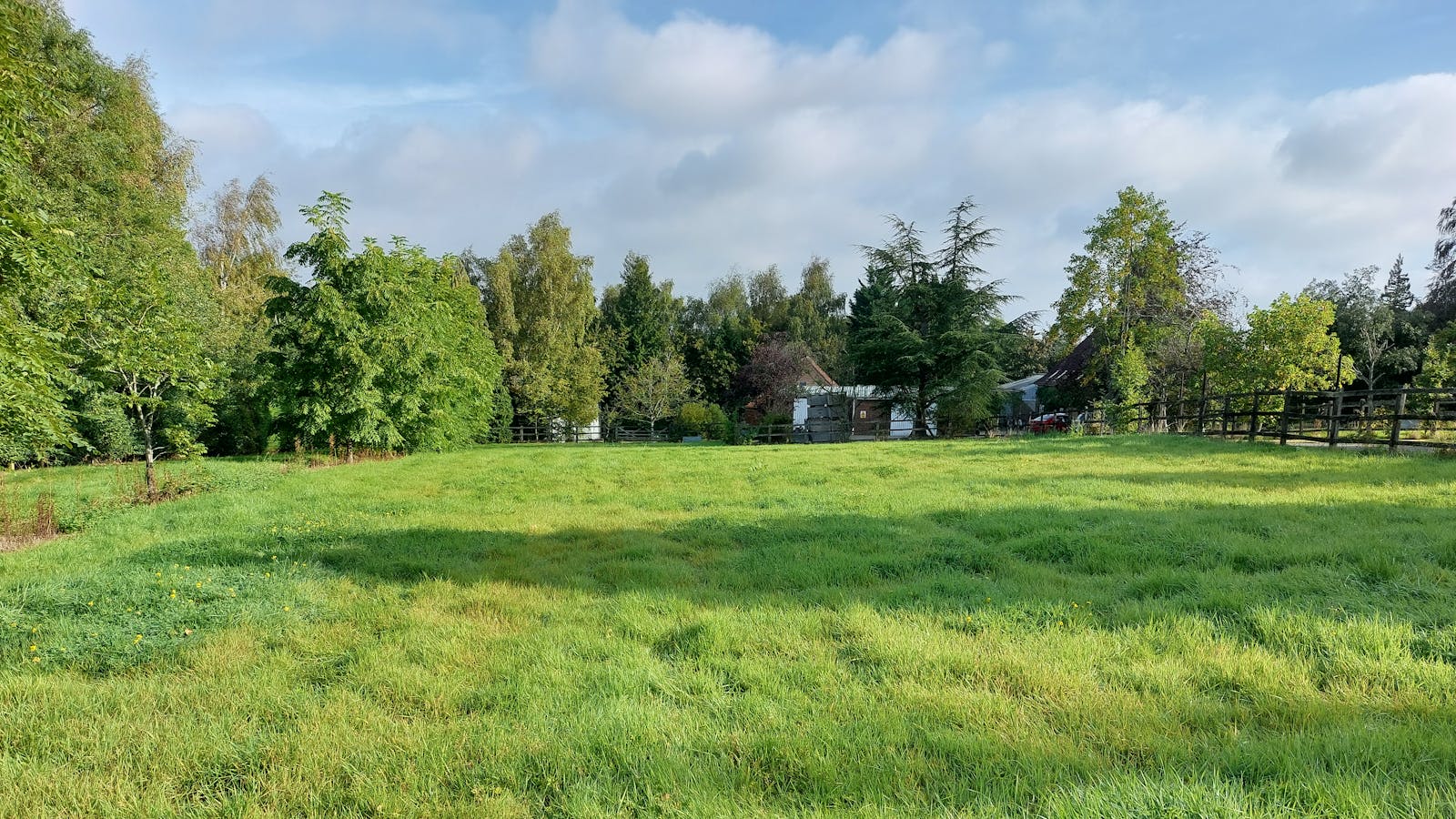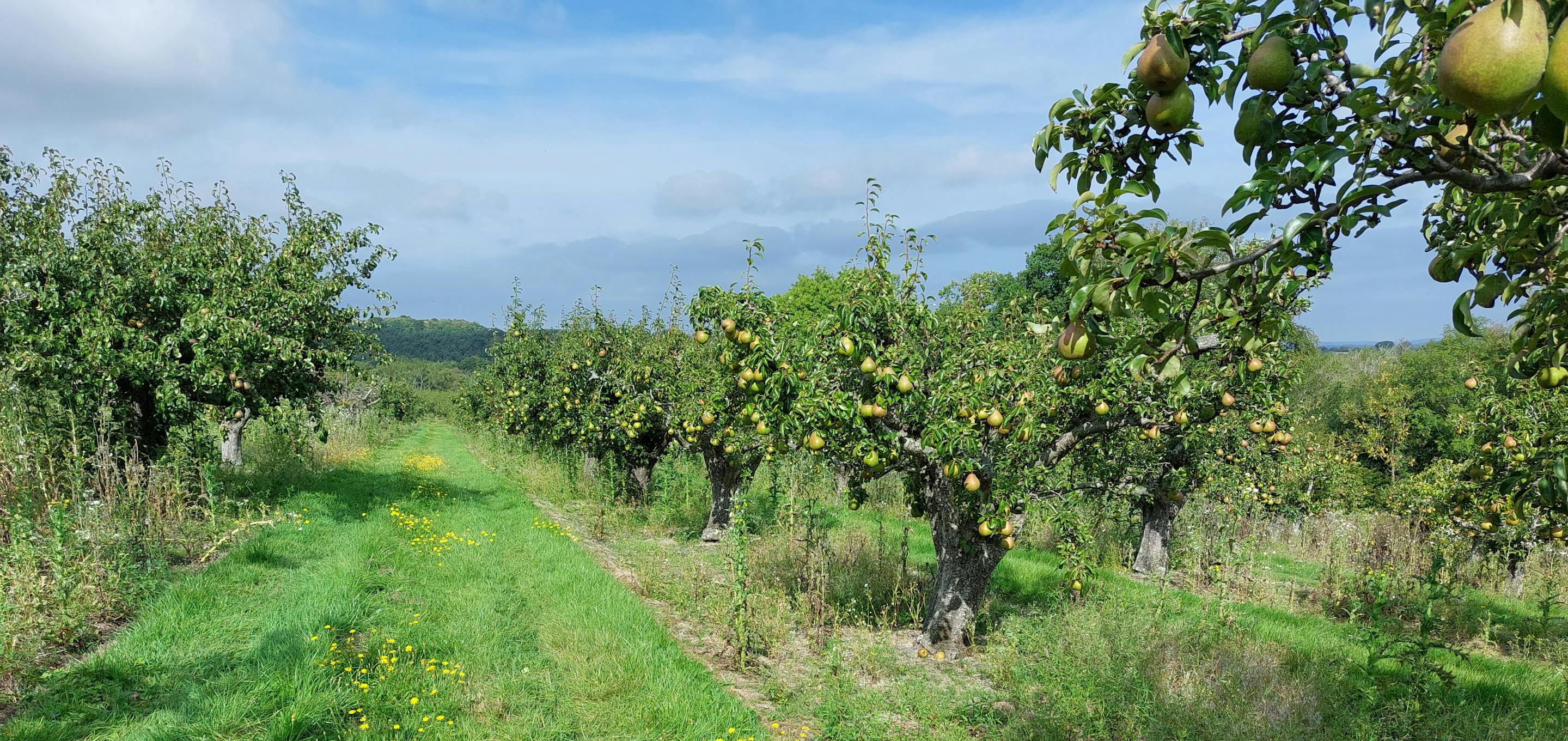
Laurel Tree FarmBNG offset site
Local Planning Authority: Wealden
National Character Area: High Weald
OS grid ref: TQ 53292 32803
Postcode: TN6 3GR
What3words: ///jumbo.permanent.breathy
Habitat units available - Surveyed 2023
A total of 97.10 habitat units and 14.74 hedgerow units are available from the following habitat types:
Grassland
Traditional Orchard (High distinctiveness) - 44.263 units
Other neutral grassland (Medium distinctiveness) - 37.142 units
Heathland and Shrub
Mixed scrub (Medium distinctiveness) - 8.157 units
Woodland
Lowland mixed deciduous woodland (High distinctiveness) - 7.192 units
Ponds and Lakes
Ponds (non-priority habitat) - 0.346 units
Hedgerow
Species-rich native hedgerow - 14.587 units
Line of trees - 0.153 units
Site description
Laurel Tree Farm is located within the High Weald National Landscape, around 1.8 km northeast of Crowborough. It is embedded within an extensive network of ancient woodlands. Ancient woodlands often contain a diverse array of species, many of which only thrive in well-established woodland habitats. Only 430 m to the west of the site lies Bream Woods SSSI, an ancient woodland that supports a rich flora including several locally rare ferns and mosses, reminiscent of the Atlantic rainforests found along the western shores of the UK.
The site is currently managed as an intensive orchard, which uses modern farming methods to maximise productivity. By converting to traditional orchard management, the site will continue to provide home-grown fresh fruit while also creating a Priority Habitat that is incredibly valuable for a range of wildlife. Traditional orchards use little to know pesticides, herbicides, and fertilisers, which allows a rich ground flora to develop, with potential to become a wildflower-rich lowland meadow humming with bees. Meanwhile, fruit and nut trees are allowed to become fully mature, and any dead wood is not removed, but instead left for nature to do its work, creating habitat for a wide range of invertebrates and fungi. New species-rich native hedgerows will be created throughout the orchards, providing ideal feeding and nesting sites for bird life.
In addition, new woodland and scrub will be created to help connect existing fragmented ancient woodland patches within and adjacent to the site, and grasslands with scattered ponds will no doubt attract swallows, swifts, and house martins which swoop acrobatically over fields to catch insects in mid-air during the summer months.
Fill out a form at the bottom of this page or email your development's BNG metric to bngenquiries@adonisblue.org.uk for a free BNG consultation.
These units are valid for a maximum of two years, provided site conditions do not significantly change. If more than two years have lapsed between the site survey and habitat works being undertaken, an updated survey will be necessary to ensure recommendations remain valid.

Habitat Transitions


Site Photos
